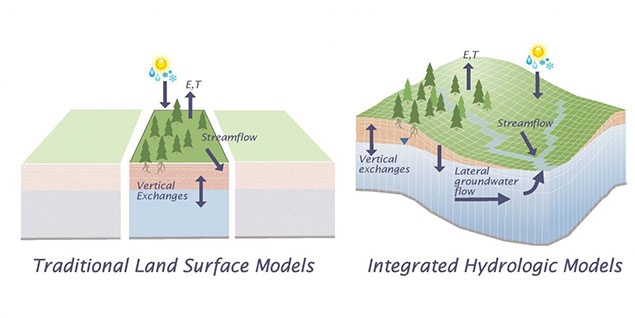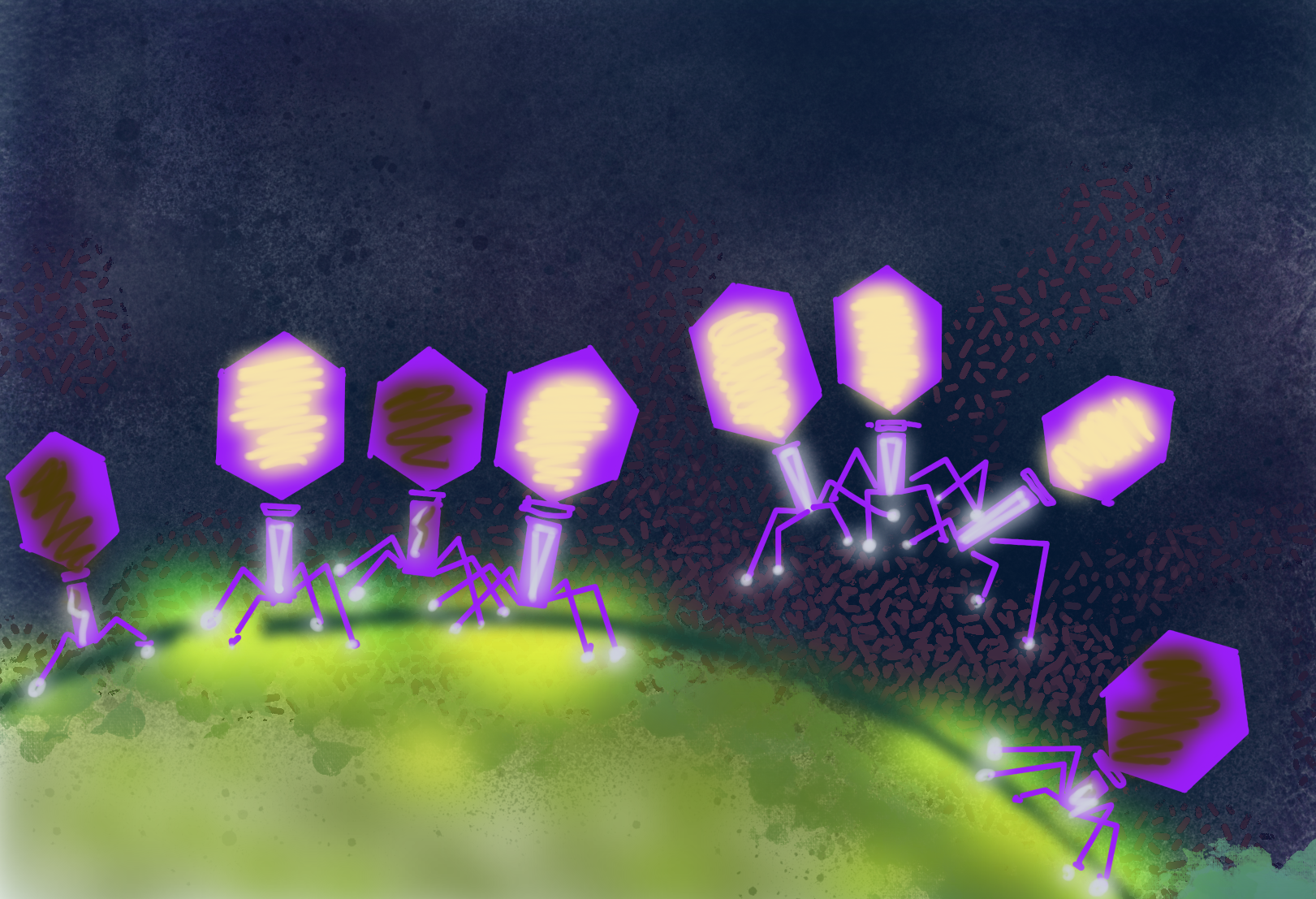Groundwater Flow Is Key for Modeling the Global Water Cycle
Water table depth and groundwater flow are vital to understanding the amount of water that plants transmit to the atmosphere.

The Science
Plants are one of the largest water users on land and, through transpiration, they move more water into the atmosphere than streams or rivers move across the landscape. Unlike stream flow, which can be easily observed, measuring or simulating the amount of water plants transmit to the atmosphere is a significant challenge. Now, using the U.S. Department of Energy’s advanced computing capabilities, scientists have modeled plant transpiration from groundwater to the atmosphere. In doing so, they have discovered that lateral groundwater flow, which has not been included in previous modeling studies, may be the missing link to predicting how important plant water use is to the global water cycle.
The Impact
Managing water resources at regional scales requires understanding how much water the vegetation in that region uses. The relative importance of plant transpiration is one of the largest uncertainties in balancing regional and global water cycling. Improving the regional and global simulations of plant transpiration will enable scientists to better predict how the water system will respond to future Earth system changes. The new insights will also let scientists predict and understand how much freshwater is globally available.
Summary
Using integrated hydrologic simulations that couple vegetation and land energy processes with surface and subsurface hydrology, the researchers studied the relative importance of transpiration as a fraction of all the water moving from the land surface to the atmosphere (commonly referred to as transpiration partitioning) at the continental scale. They found that both the total flux of water and transpiration partitioning are connected to water table depth. Because of this connection, including groundwater flow in the model increases transpiration partitioning from 47±13% to 62±12%. This finding suggests that groundwater flow, which is generally simplified or excluded from other continental-scale simulations, may provide a missing link to reconciling observations and global models of terrestrial water fluxes.
Contact
BER PM Contacts
David Lesmes, SC-23.1, 301-903-2977
Paul Bayer, SC-23.1, 301-903-5324
PI Contacts
Reed Maxwell
Colorado School of Mines
Rmaxwell@mines.edu
Laura Condon
Syracuse University
lecondon@syr.edu
Funding
This work was supported by the U.S. Department of Energy, Office of Science, Office of Biological and Environmental Research and Office of Advanced Scientific Computing Research through the Interoperable Design of Extreme-scale Application Software (IDEAS) project. Simulations were made possible through support from Yellowstone at the National Center for Atmospheric Research Computational and Information Systems Laboratory.
Publications
R.M. Maxwell and L.E. Condon, “Connections between groundwater flow and transpiration partitioning.” Science 353(6297), 377-380 (2016). [DOI: 10.1126/science.aaf7891]
Highlight Categories
Performer: University



